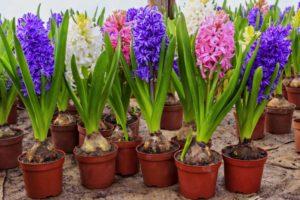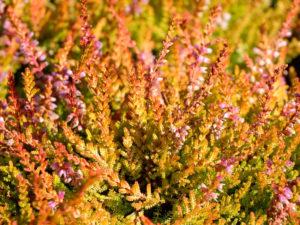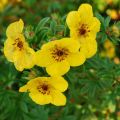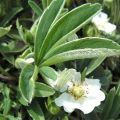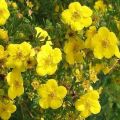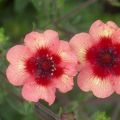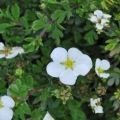Description of Potentilla shrub Goldstar, planting and care
Shrub cinquefoil is loved by gardeners and landscape designers for its beautiful and long flowering. The second name - Kuril tea - the plant received for a dark infusion with a tart smell, which is used by residents of the Urals and the Far East. Cinquefoil shrub Goldstar is one of the many varieties of culture. It is planted not only in garden plots, but also in tubs, volumetric pots on terraces, loggias.
Description and characteristics of Potentilla shrub Goldstar
Kuril tea reaches a height of 80 centimeters, the crown spreads out to 1.2 meters. Leaves of Potentilla shrub Goldstar are gray-green, turn yellow by autumn. They consist of 5 lobes, for which the plant is called five-leafed. The shrub blooms with bright yellow flowers from June to September.
The planting grows rapidly, each year increasing its volume by 15 centimeters. It prefers well-lit places, where the flowering of Potentilla is brighter and more abundant. The plant is frost-resistant, no shelter is required for the winter.
Pros and cons of the variety
Cinquefoil shrub Goldstar has the following advantages:
- bushes keep their shape well;
- grow in one place for a long time;
- easy to form;
- long and beautiful bloom;
- winter hardy;
- used as melliferous plants.
The disadvantages include the plant's susceptibility to certain diseases and pests, as well as the exactingness of aerated soils.

Rules for growing Potentilla Goldstar
The shrub is capable of growing in the same place for many years, so the planting area must be carefully selected. When growing several plantings, it is important to correctly determine the distance between them.
Site selection and soil preparation
Cinquefoil Goldstar prefers sunny places; in the shade, flowering may not begin. The soil is selected light, well-drained, fertile. It can range from acidic to slightly alkaline. Cinquefoil is a moisture-loving plant, so it can be planted on soils with a high groundwater table.
Timing
Potentilla Goldstar is planted in the spring, after the soil warms up well. By frost, the shrub will have time to take root well. You can also plant it in early September, but in this case, for the winter it needs to be mulched with peat and dry leaves.

Group landing distance
You can plant Potentilla Goldstar singly or in groups.When planting several bushes side by side, the distance between them is kept within 60-80 centimeters. Such a distance is necessary for airing them, which serves as the prevention of diseases.
Disembarkation process
Planting Kuril tea is as follows:
- A hole is dug with a volume that is 2 times the volume of the plant's root system.
- Drainage is laid at the bottom, consisting of lime gravel, broken bricks, river pebbles.
- The pit is half filled with a substrate consisting of humus, leafy soil, sand with the addition of 100 grams of complex mineral fertilizer.
- A seedling is placed in the middle of the planting hole, then it is filled with the remaining soil (without fertilization).
The near-trunk circle is abundantly spilled with water. To retain moisture, it is mulched with peat or tree bark.
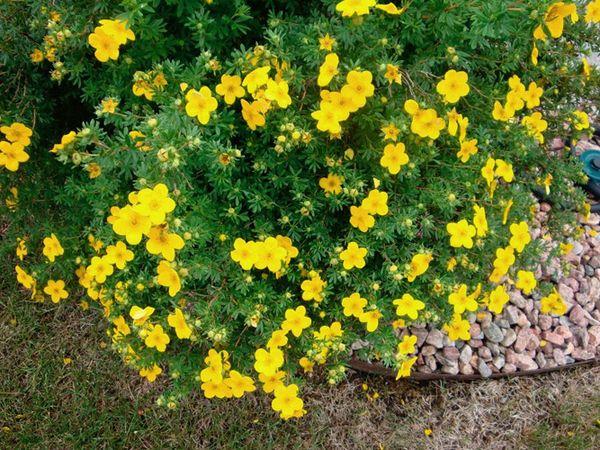
Note! When planting, the root collar of the bush should not go deep: after watering it will be flush with the ground.
Further care of the shrub
Caring for Goldstar Potentilla consists of watering, feeding, loosening the soil. In addition, plants require pruning, both sanitary and formative. Faded buds are also removed, due to which the decorative effect of the bushes is lost.
Pruning Potentilla
To maintain a decorative look, the cinquefoil must be trimmed. The procedure is carried out in spring or autumn: old, broken, diseased branches are removed. In addition, gardeners do formative pruning by cutting ⅓ of the branches. When the plant reaches 5-6 years of age, it can be rejuvenated by cutting out shoots up to 15 cm stumps.

Loosening, weeding and mulching
After rain or watering, the soil is loosened. The procedure facilitates air access to the roots. At the same time, weeds are removed, which interfere with the development of bushes and can be carriers of pests and diseases. To preserve moisture in the soil, the root system is mulched with peat, sawdust or tree bark.
Watering and feeding
The soil on which Potentilla is grown should be moderately moist. In dry, sultry weather, the bushes are watered twice a week. With sufficient rainfall, additional moisture is not required. Goldstar Potentilla bushes are fed with potassium-phosphorus fertilizers in spring, during budding and after flowering.
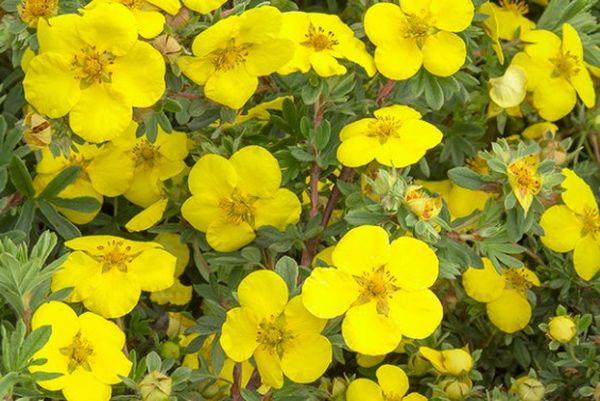
Diseases and pests
Cinquefoil Goldstar is quite resistant to the appearance of diseases and pests, but under adverse conditions it can be struck by the following misfortunes:
- Rust. At the same time, yellow-brown spots appear on the lower part of the leaf plates. To rid the seedlings of this disease, you need to spray the ground part of the bushes with a weak solution of potassium permanganate, boric acid, or copper-containing preparations.
- Spider mites. These pests appear in too dry and sultry summer. They braid the branches with cobwebs, preventing them from developing.
- Scoops. These butterflies are dangerous in that they breed caterpillars that eat up Potentilla bushes. To combat them, Fitoverm is used, spreading and spraying plants according to the instructions on the package.
Breeding methods
Goldstar cinquefoil is propagated on the site in several ways: by seeds, cuttings, dividing the bush, layering.

By division
The division procedure is carried out as follows:
- dig up an old bush with a pitchfork;
- divide it into parts so that each section has rhizomes and buds;
- the bushes are planted in prepared holes, watered, mulched.
In order for the plants to take root faster, the root system can be treated with root stimulants.
Important! The bush dividing tool must be sharp and sanitized.

Cuttings
Propagation by cuttings is performed as follows:
- shoots are cut into a length of 10-12 centimeters;
- the lower part is dusted with a root formation stimulant;
- cuttings are planted in a shaded area of the site;
- covered with glass jars.
Water the cuttings as needed. They are planted in a permanent place after a year.
Seeds
Seed propagation is rarely used by gardeners, since the method is laborious, and the bushes bloom much longer than those grown in other ways. Seeds are collected for this in the fall, sown at the end of winter, first in a planting box, then the seedlings are transplanted into separate pots. A year later, young plants are planted in open ground.

Layers
To propagate cinquefoil by layering, you need to do the following:
- the lower shoot is freed in the middle of the foliage;
- bends to the ground, pinned;
- covered with earth, watered.
During the season, the pinning site is watered. In autumn, the cutting is separated and planted separately. For the winter it needs to be covered with peat and dry leaves.
Cinquefoil Goldstar in landscape design
The bushes keep their shape well, so gardeners often use Goldstar Potentilla for landscaping the local area. It is planted as a hedge instead of a fence, in the form of medium-sized curbs. Shrubs look spectacular both singly planted against the background of the lawn, and in groups of several plants. Potentilla looks harmonious in mixborders, rockeries, alpine slides.
